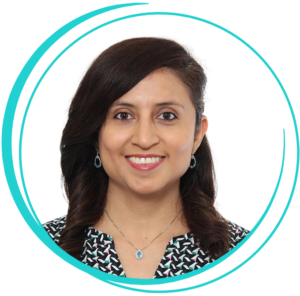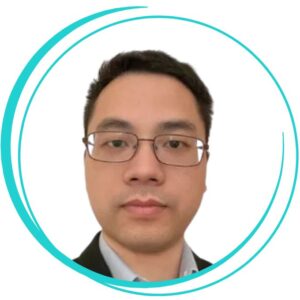| October 16, 2024 |
|---|
11:30-12:30: Lunch at Linsen
12:30-13:00: Registration, pick up of badges and programs
13:00-13:15: Welcome from Chalmers and introduction of the program
13:15-14:15: 3 best paper presentations
14:15-14:45: Coffee break and poster presentations
14:45-15:45: 3 best paper presentations
15:45-16:15: Poster presentations
16:15-17:55: 4 best paper presentations
18:00-19:00: Poster presentations and snacks and drinks
19:00-21:00: Conference dinner (Linsen) and announcement of best paper award
* Participation in the WASP meeting is open for WASP members and affiliates. If you would like to register for this meeting only, please email us at daryna.pesina@chalmers.se. Otherwise, please indicate your participation in the WASP meeting in the registration form.
| October 17, 2024 |
|---|
09:00-9:30: Sponsor keynote (Ericsson)
9:30-10:15: Invited speaker
10:15-10:45: Coffee break
10:45-11:30: Invited speaker
11:30-12:30: Lunch at Linsen
12:30-13:00: Sponsor keynote (Huawei)
13:00-13:45: Invited speaker
13:45-14:15: Coffee break
14:15-15:00 Invited speaker
15:00-16:30: Panel
16:30-16:45: Closing of the workshop
Keynote speakers | October 17, 2024
Diana Pamela Moya Osorio (Linköping University): Integrated Sensing and Communications in 6G: Trustworthiness Perspective
Abstract: One of the most promising features that will be an integral part of the sixth generation of wireless mobile networks (6G) is the integration of sensing functionality, which allows a better understanding of the surrounding context and precise localization of users and things, i.e. the network acting as a sensor. Hence, the mobile network needs to evolve to provide a low-cost and efficient co-design of radar sensing and communication functionalities, with the broad integration of the new paradigm of integrated sensing and communications (ISAC) toward perceptive mobile networks (PMNs). With enhanced sensing capabilities of 6G, PMNs will be able to perceive their surrounding environment, achieving unprecedented precision down to the centimeter level. By effectively having “eyes everywhere,” diverse applications and verticals can thrive. However, serious concerns raise in the advent of a world where omnipresent wireless signals enable the tracking of people—monitoring their habits, gestures, and even vital signs—without their awareness. To construct a trustworthy 6G network, one that heavily relies on sensing information for operations, we must prioritize robust strategies to safeguard the integrity of this data. This talk aims at elucidating the security and privacy aspects on the design of trustworthy ISAC systems toward 6G.
Biography: Diana Osorio is currently an Associate Professor at the Communication Systems Division, Department of Electrical Engineering, Linköping University, Sweden, and an ELLIIT recruited faculty. Previously, she was a Senior Research Fellow and Adjunct Professor at the Centre for Wireless Communications, University of Oulu, Finland. She received a D.Sc. degree in electrical engineering with an emphasis on telecommunications and telematics from the University of Campinas, Brazil, in 2015. From 2015 to 2022, she was an Assistant Professor with the Department of Electrical Engineering, Federal University of São Carlos, Brazil. From 2020 to 2023, she was also a Postdoctoral Researcher for the Academy of Finland. Currently, she is Associate Editor of IEEE Wireless Communications Letters and IEEE Transactions on Information Forensics & Security. She also serves as working group leader for Trustworthy 6G at the Cost Action 6G-PHYSEC. Her research interests include wireless communications in general, signal processing for wireless communications, physical layer security, and integrated sensing and communications.
Xuesong Cai (Lund University): Understanding Millimeter-Wave and sub-THz Channels for Communication and Sensing
Abstract: Understanding propagation channels is a prerequisite for the design and evaluation of wireless systems. While there is ample knowledge about propagation in frequency bands below 6 GHz, the same cannot be said for millimeter-wave (mmWave) and sub-THz frequencies, particularly regarding the dynamic behavior of channels that are essential for both communication and sensing. In this talk, I will introduce the design and implementation of two real-time mmWave and sub-THz channel sounders that can measure dynamic double-directional dual-polarized channels, complemented with a bandwidth of up to 2 GHz. Based on high-resolution parameter estimation results from the measurements, I will discuss the physical mechanisms of wave propagation at these frequencies. Finally, building upon the understanding of propagation mechanisms, a simultaneous localization and mapping (SLAM) algorithm considering multiple map features (i.e., specular reflections and point scattering) is proposed for environment sensing and UE localization.
Biography: Xuesong Cai is a Docent (Associate Professor) at the department of electrical and information technology at Lund University, Sweden. He received his Ph.D. degree (with distinction) from Tongji University, Shanghai, China, in 2018. From 2018-2022, he conducted several postdoctoral stays at Aalborg University and Nokia Bell Labs, Denmark, and Lund University, Sweden. His research interests include radio propagation, high-resolution parameter estimation, and radio-based localization for 5G/B5G wireless systems. His work has led to over 66 peer-reviewed publications, 2 book chapters, and 4 granted patents. He was a recipient of the China National Scholarship (the highest honor for Ph.D. Candidates) in 2016, the Outstanding Doctorate Graduate awarded by the Shanghai Municipal Education Commission in 2018, the Marie Skłodowska-Curie Actions (MSCA) “Seal of Excellence” in 2019, the EU MSCA Fellowship (ranking top 1.2%, overall success rate 14%) and the Starting Grant (success rate 12%) funded by the Swedish Research Council in 2022. He was also selected by the “ZTE Blue Sword-Future Leaders Plan” in 2018 and the “Huawei Genius Youth Program” in 2021. He is an AP-S 2024 Young Professional Ambassador and serves as an Editor for IEEE Transactions on Vehicular Technology, IEEE Antennas and Wireless Propagation Letters, and IET Communications.
Furkan Keskin (Chalmers University of Technology): Trade-offs and Non-idealities in Monostatic ISAC Systems
Abstract: Integrated sensing and communication (ISAC) emerges as a cornerstone technology for 6G, seamlessly incorporating sensing functionality into wireless networks as an inherent capability. Operating at high carrier frequencies, a common technological trend in the evolution towards 6G, may escalate the impact of hardware impairments (HWIs) on both functionalities in ISAC systems, more significantly affecting the sensing capability. In this talk, we first provide an overview of monostatic orthogonal frequency-division multiplexing (OFDM) ISAC systems and focus on two fundamental trade-offs—namely, the time-frequency domain trade-off and the spatial domain trade-off, resulting from the choice of modulation order and the ISAC beamforming strategies, respectively. Then, we discuss key differences between sensing and communication channels under HWIs in the monostatic sensing context, focusing on inter-carrier interference (ICI) and phase noise (PN). Departing from the traditional approach of treating such effects solely as impairments, we shed light on how these non-idealities can be exploited to assist sensing, as opposed to their purely detrimental nature in communications. Illustrative examples are provided to showcase the benefits of impairment exploitation in improving sensing performance, even beyond that obtained via ideal, impairment-free ISAC systems.
Biography: Musa Furkan Keskin received the Ph.D. degree from the Department of Electrical and Electronics Engineering, Bilkent University, Ankara, Turkey in 2018. He is currently Research Specialist with the department of Electrical Engineering at Chalmers University of Technology, Gothenburg, Sweden, contributing to many interdisciplinary and industry-focused research projects at Swedish and European level in the area of integrated localization, communication and sensing in 6G systems. He was the recipient of the 2019 IEEE Turkey Best Ph.D. Thesis Award for his thesis on visible light positioning systems. His project “OTFS-RADCOM: A New Waveform for Joint Radar and Communications Beyond 5G” is granted by the European Commission as part of Marie Sklodowska-Curie Individual Fellowships (MSCA-IF). His current research interests include integrated sensing and communications, RIS-aided localization and sensing, and hardware impairments in beyond 5G/6G systems.
Vitaly Petrov (KTH Royal Institute of Technology): Terahertz Communications for 6G and Beyond: From Near Field to Space
Abstract: For decades, the sub-terahertz and terahertz bands (broadly speaking, the electromagnetic spectrum between 100 GHz and 10 THz) were considered no man’s land, only leveraged by exotic sensing applications. Today, the same frequency range is envisioned by both academia and industry as a key enabler of ultrabroadband wireless communication and sensing systems and a critical asset for the upcoming sixth generation (6G) of wireless systems, spanning even toward 7G. What has drastically changed in the recent ten years leading to these conclusions? This talk aims to answer this question and discuss the state of the art in the rapidly progressing research field of terahertz band wireless systems and networks, particularly emphasizing novel research challenges and opportunities in this field. The talk covers a wide scope of target use cases, from near-field communications to multi-km-long terahertz satellite links and networks.
Biography: Vitaly Petrov is an Assistant Professor with the Division of Communication Systems, KTH Royal Institute of Technology, Stockholm, Sweden. Prior to joining KTH in 2024, he was a Principal Research Scientist with Northeastern University, Boston, MA, USA (2022–2024), as well as a Senior Standardization Specialist and a 3GPP RAN1 delegate with Nokia Bell Labs and later Nokia Standards (2020–2022). Vitaly obtained his Ph.D. degree in Communications Engineering from Tampere University, Finland, in 2020. He has been a visiting researcher with the University of Texas at Austin (USA), Georgia Institute of Technology (USA), and King’s College London (UK). Vitaly is an Editor of the IEEE Transactions on Wireless Communications and has also served as a Guest Editor of the IEEE Journals of Selected Areas in Communications (IEEE JSAC). Vitaly’s research interests include terahertz (THz) band communications and networking for 6G and beyond. He is a recipient of the Best Student Paper Award at IEEE VTC-Fall 2015, the Best Student Poster Award at IEEE WCNC 2017, and the Best Student Journal Paper Award from IEEE Finland in 2019.



